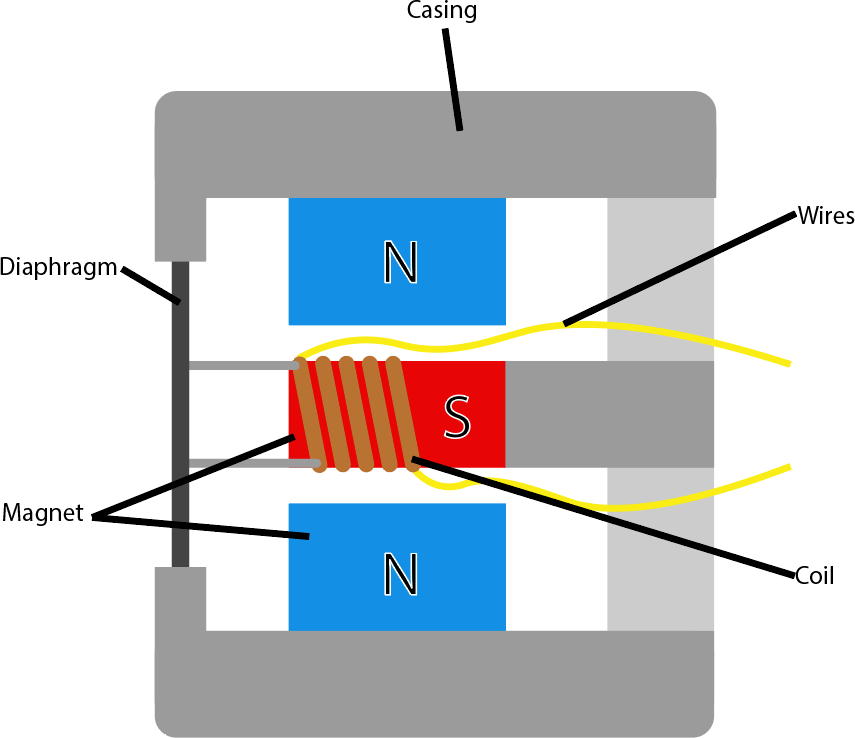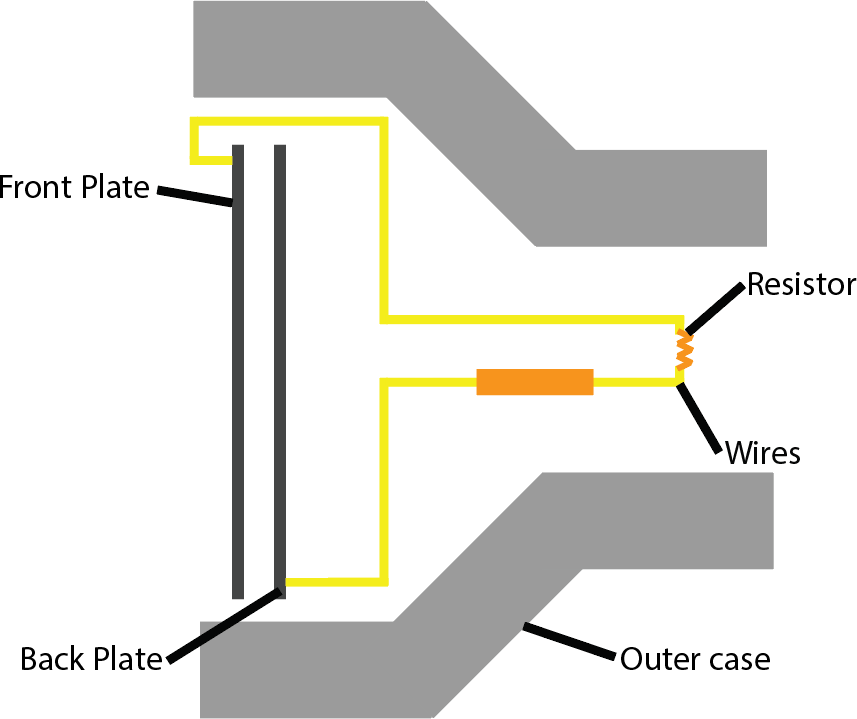Something Powerful
The Basics of Audio
The human ear hears sound when there are changes in air pressure caused by sound waves. Regardless of the source of the sound, the waves created are a result of the object vibrating. This is true for anything, from guitar strings or loudspeakers, down to vocal cords of humans and animals.
How does a microphone work?
The main principle behind all microphones is the diaphragm. When a microphone picks up noise the diaphragm moves back and forth, due to the sound pressure changes, which can be detected in a variety of ways to give out electrical signals. The two main types of microphones are called ‘dynamic’ and ‘condenser’, both of which have their own sub-types that use the diaphragm in different ways.
Section Title
Dynamic microphones utilise electromagnetic induction to turn the physical sound pressure into an electrical signal. Typically, when someone refers to a ‘dynamic microphone’ they are referring to a moving-coil/magnet setup. The setup consists of a copper wire coil wrapped around a magnet, with one of the two components attached to the diaphragm. The diaphragm moves either the coil or the magnet back and forth relative to the other, which causes an electrical signal to be made. Altogether, this part of the microphone is called a ‘transducer’. Additionally, this is the most common and thus, cheapest microphone that most people use.


Section Title
Ribbon microphones are also dynamic microphones, however their technique to convert sound into signals is vastly different from moving-coil mics. Typically made using a piece of thin aluminium, the ribbon is held taut between two poles of a magnet and has an electrical current running through it, effectively making it a diaphragm and the ‘coil’ part of the first example, at the same time. When sound waves pass through the ribbon, the current is manipulated and that manipulation can be translated into data, storing the sound digitally. A small difference in the output signal between ribbon mics and moving-coil mics is that ribbon microphones produce incredibly weak signals (about 0.02ohms) and must be sent through a transformer to be able to use them in anything.
Section Title
Condenser microphones use electrostatic, to convert sound into signals. In theory, it should actually be called a ‘capacitor’ microphone, because ‘condenser’ is what capacitors were called when the mic was invented in 1916. Capacitors are designed to hold an electrical charge. As such, a condenser microphone must be sufficiently charged for it to function, which is the main drawback when compared to dynamic – it cannot work without power. The diaphragm in a condenser mic is a plate that has electricity running through it and can move back and forth, in front of a fixed back plate that has the other end of the circuit. When sound waves move the diaphragm, an electrostatic signal is made, which can be converted into digital audio.

Section Title
The main differences between these microphones, in terms of practicality, is the cost-to-quality ratio. Condenser microphones are much more expensive and delicate, but they can pick up much quieter sounds. Additionally, condenser mics require mixers to offer ‘phantom power’ to feed the capacitor’s power requirements, otherwise the microphone will not function at all (some condenser mics have the capability to use a battery, however). Ribbon microphones are best suited to studio environments, as they are also quite delicate, but are able to pick up incredibly subtle sounds. To contrast, moving-coil microphones are quite sturdy, making them great for stage work.

Section Title
How do speakers work?
Speakers work remarkably similar to moving-coil microphones, just in reverse. By taking an electrical signal and moving it through the coil it produces kinetic energy, causing the cone to vibrate. This replicates the soundwave that was originally recorded by the microphone, or even a sound created digitally. Loudspeakers differ in their size, which helps them play different frequencies; a “surround sound” setup usually has six speakers; left channel, right channel, front right, front left, center and low frequency/woofer.
